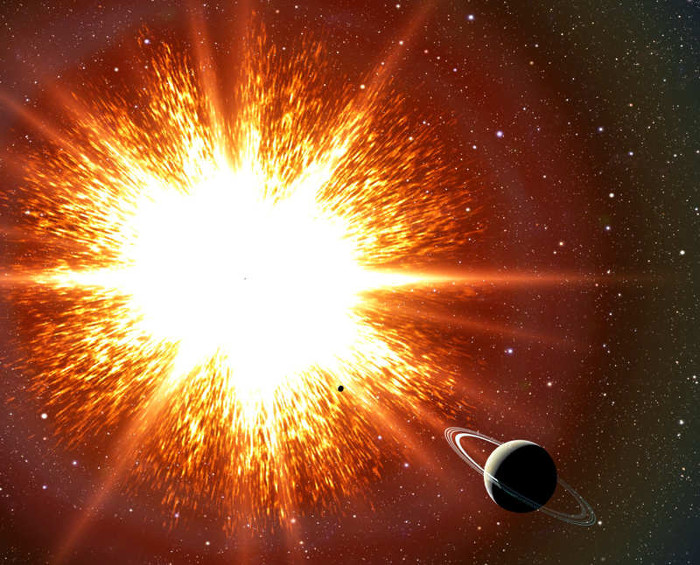Supernovae can cause extinction 2.5 million years ago
The supernova explosion millions of years ago may have destroyed the ozone layer, causing great changes for living organisms on Earth.
The scientific world said that the Earth is experiencing due to human activities. However, previous events that have wiped out much of life on Earth could have originated from a supernova explosion, according to the International Business Times.
"We are interested in how exploding stars affect life on the Earth. A few million years ago, life on our planet has changed and this has to do with supernova explosions , " said Brian Thomas, astrophysicist at Washburn University, USA.

Radiation from a supernova explosion near Earth can lead to changes in life on the planet.(Photo: David Aguilar).
In a study published in Astrobiology, Thomas and colleagues investigated a supernova explosion that occurred about 2.5 to 8 million years ago, based on fossil evidence. They discovered fossils all over the world during the transition period between the Pliocene and Pleistocene geological states with high levels of 60Fe isotopes . This is a radioactive isotope created by a supernova explosion.
The team estimates the supernova explosion is about 160 light-years from Earth. Although this is a great distance, the high-energy particles emitted by supernova explosions can fly to Earth, constantly colliding with our atmosphere for hundreds of years, even only thousands of years.
Radiation from supernova destroys the ozone layer. Without the protection of the ozone layer, the amount of sun's ultraviolet (UV) light hitting the Earth's surface more could cause cancer and even alter the DNA of the organism.
According to fossil research data, the Earth experienced an event similar to that of about 2.5 million years ago."There have been special changes in Africa, the habitat with many forests has turned into more grasslands , " Thomas said.
When a star dies, two cases can occur based on its internal size and energy. The star can collapse and become a black dwarf if it is small in size like the Sun. Big stars with more fuel will bulge and then explode. This event is called supernova explosion.
is the biggest explosion in the universe. In the explosion, a large amount of different gases, radiation and matter are sprayed into space. After the supernova explosion, a star can turn into a black hole if it is big enough, or become a neutron star.
- Unprecedented discovery of supernovae
- Forget the dinosaurs, this is the most horrifying extinction in Earth's history
- 4 types of explosions create supernovae
- Why are some fish species extinct 65 million years ago
- Learn about supernovae and supernovae
- The extinction event took place at a tremendous speed
- The 'killer' caused mass extinction 250 million years ago
- The supernova is only 14 years old, causing fever for unexpected reasons
- The erupting ancient volcano caused a global extinction disaster
- Two years in the darkness of the Earth after the asteroid disaster
- Life on the earth grows by colliding with meteorites
- Earth has experienced two great extinctions
 Van Allen's belt and evidence that the Apollo 11 mission to the Moon was myth
Van Allen's belt and evidence that the Apollo 11 mission to the Moon was myth The levels of civilization in the universe (Kardashev scale)
The levels of civilization in the universe (Kardashev scale) Today Mars, the sun and the Earth are aligned
Today Mars, the sun and the Earth are aligned The Amazon owner announced a secret plan to build a space base for thousands of people
The Amazon owner announced a secret plan to build a space base for thousands of people